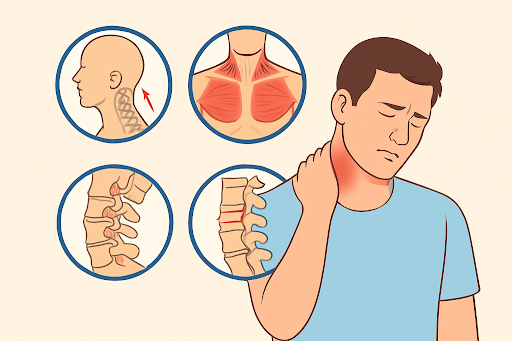(02) 8850 1238
2. Muscle Strain or Overuse Injury
Why it happens
Common symptoms
Sharp pain in one area of the neck Tenderness or muscle spasm on touch Pain that increases with specific movements Mild restriction in motion
Physiotherapy treatment
Pain management strategies such as gentle cold or heat therapy. Manual therapy and stretching to reduce muscle tension. Isometric strengthening to restore stability without aggravating the injury. Progressive exercises to rebuild strength and flexibility safely.

